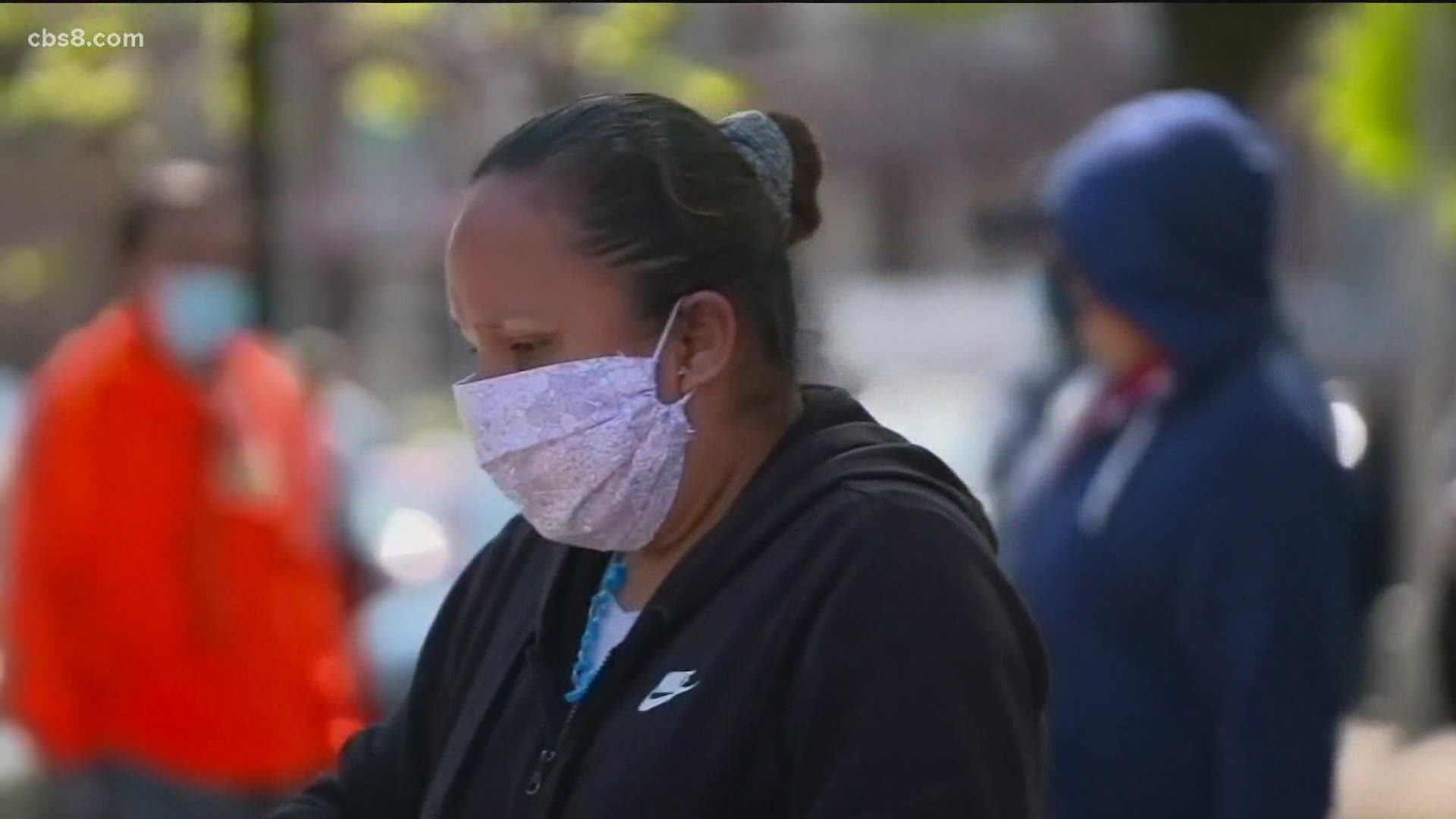SAN DIEGO — San Diego County’s case rate remained below 100 per 100,000 residents for the eighth consecutive day Wednesday. All schools remain on track to reopen September 1, if the numbers hold and their districts decide to reopen.
The county reported a case rate of 85.2 Wednesday. The rate peaked at 158.5 on July 23. Public health officials reported 212 new COVID-19 cases and five additional deaths Wednesday, raising the region's totals to 35,376 cases and 638 deaths.
“The goal is to keep it down and to keep it below. This is not a finish line. It’s merely a way point in the marathon around coronavirus,” said Supervisor Nathan Fletcher.
San Diego was the second county to get off the state’s watch list and the most populous as of Wednesday. It could return to the monitoring list if it exceeds any one of six different metrics for three consecutive days. Those metrics are the case rate, the percentage of positive tests, the average number of tests a county is able to perform daily, changes in the number of hospitalized patients and the percentage of ventilators and intensive care beds available. All remained within state limits Wednesday.
Cases increased 6% over the past week countywide. They increased the most in zip codes that include the Marine Corps Recruit Depot, Potrero and Ramona.
South Bay communities continue to have the highest total number of cases because of an early spike. Cases are now increasing at or below the county average amid an increased and focused testing and tracing effort.
Currently, case rate is only tied to the reopening of K-12 schools. Gov. Gavin Newsom said the California Department of Public Health is working on draft versions of updated industry guidance that could be released next week.
“We’ll be socializing that more formally over this weekend with our local health officers and will be making public next week the details of our strategy as it relates to reopening when we see the data stabilize based on new criteria, new conditions that we’re setting forth,” said Newsom.
The guidance is expected to open industries in phases based on how many outbreaks occurred in the different settings to avoid a spike of cases like the state experienced in late June and early July.
CDPH, outside experts and epidemiologists from various counties and the University of California system are debating whether a 14-day window allows sufficient time to review trends given that the incubation period of coronavirus is 14 days. The governor alluded new guidance may require up to 21 days between phases.
“You need to have that 14 days and then an extra week to do the analysis to look at where we are. Three weeks is a reasonable time period to assess and look back at what happened and where we are now,” said Dr. Wilma Wooten, M.D., M.P.H., the county’s public health officer, who has been on several of the conference calls with CDPH.
Wooten, Newsom and state officials emphasized no decisions have been made. Once the state issue guidance, Wooten, as public health officer, can decide whether to implement it based on local case numbers and trends to help avoid a potential resurgence.
"We don’t want to undo the progress we’ve made,” said Fletcher. “We want to make sure, as we move into the next phase of where we go, that we do it cautiously, we do it responsibly and we keep our case count down.”

